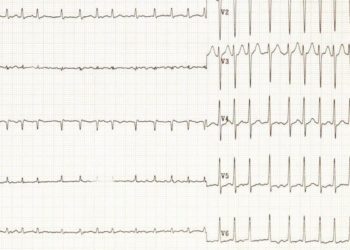Whole exome sequencing effective at identifying mitochondrial pathogenic mutations
1. The genomic basis of mitochondrial disease is often abstruse and multifactorial.
2. Whole-exome sequencing was able to pinpoint previously unidentifiable mutations.
Evidence Rating Level: 2 (Good)
Study Rundown: Mitochondrial disease has become a commonly identified cause of inherited disease with a prevalence of approximately 1/5,000 with varying penetrance. Similar phenotypic presentations seem to have more genomic etiologies than previously thought. Additionally, many patients have aberrant mutations affecting more than one respiratory complex. This study aimed to elucidate the efficacy of whole-exome sequencing to define the molecular basis of disease. Samples from a cohort of 53 patients affected by mitochondrial disease were sequenced to look for identifiable genotypic variants predicting phenotypical presentation. Only one of these patients had previously defined genotypic disease. The rest of the cohort had proven biochemical or histologic evidence of mitochondrial disease but undiscovered genotypic basis of pathology.
Pathologic variants were discovered in over half of the study patients using whole-exome sequencing. The study findings reiterate the heterogeneity of mitochondrial disease as 18 different genes and 33 other candidate pathologic mutations were found in the 53 cases studied. Although cases remained unresolved, the results give credence to the effectiveness of whole-exome sequencing in elucidating cases. Future full genome sequencing and analysis may provide greater clarity on not only single pathological genes but also the effect of one deleterious mutation on successive portions in the respiratory chain.
Click to read the study, published today in JAMA
Relevant Reading: Mechanisms of mitochondrial disease
In-Depth [cohort study]: This study featured 53 patients with biochemically and/or histologically evident mitochondrial disease. Patients were referred to one of two laboratory locations, one in England and one in Germany between 2005 and 2012. Inclusion criteria consisted of proven diagnosis of mitochondrial disease via biopsy of clinically affected tissue and absence of large scale mitochondrial DNA rearrangements, deletions, or point mutations. Phenotypic manifestations of disease were documented via laboratory values and imaging studies. Whole-exome sequencing was performed on DNA extracted from primary cell lines, muscles, or circulating lymphocytes. Presumptive pathologic variants were discovered in 28 (53%, CI95%, 39%-67%) patients while possible pathologic variants were found in 4 (8% CI95%, 2%-18%) patients. Of the 21 cases that remained unsettled 15(28%, CI95%, 17%-42%) patients had variants of uncertain significance while 6(11% CI95%, 11%-34%) cases remained unresolved.
More from this author: Affordable Care Act: Improved health, lower costs in youth with dependent coverage, No difference in kidney function with “on” vs “off-pump” coronary bypass graft, Durability of cardiology practice guidelines varies with level of evidence, Oncogenic drivers effective at guiding lung adenocarcinoma therapy, Genetic factors account for half of complete risk of autism spectrum disorders, Increased maternal BMI linked to higher fetal, neonate, and infant mortality
Image: PD
©2012-2014 2minutemedicine.com. All rights reserved. No works may be reproduced without expressed written consent from 2minutemedicine.com. Disclaimer: We present factual information directly from peer reviewed medical journals. No post should be construed as medical advice and is not intended as such by the authors, editors, staff or by 2minutemedicine.com. PLEASE SEE A HEALTHCARE PROVIDER IN YOUR AREA IF YOU SEEK MEDICAL ADVICE OF ANY SORT.







